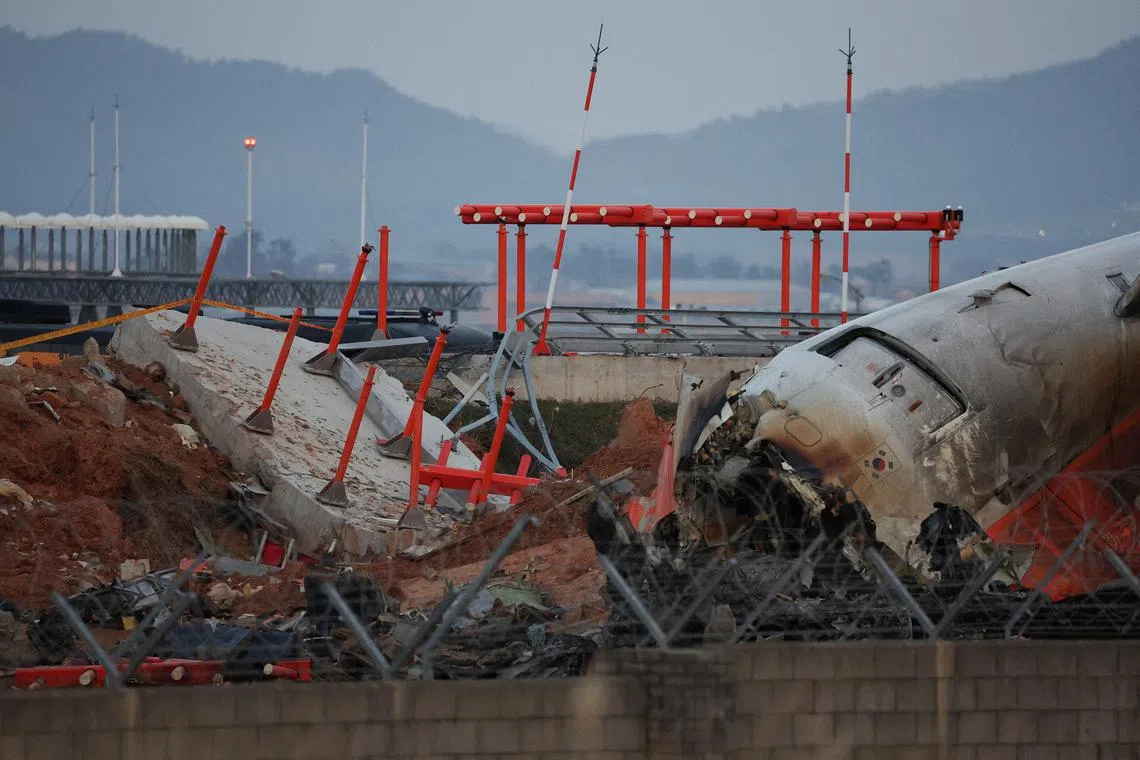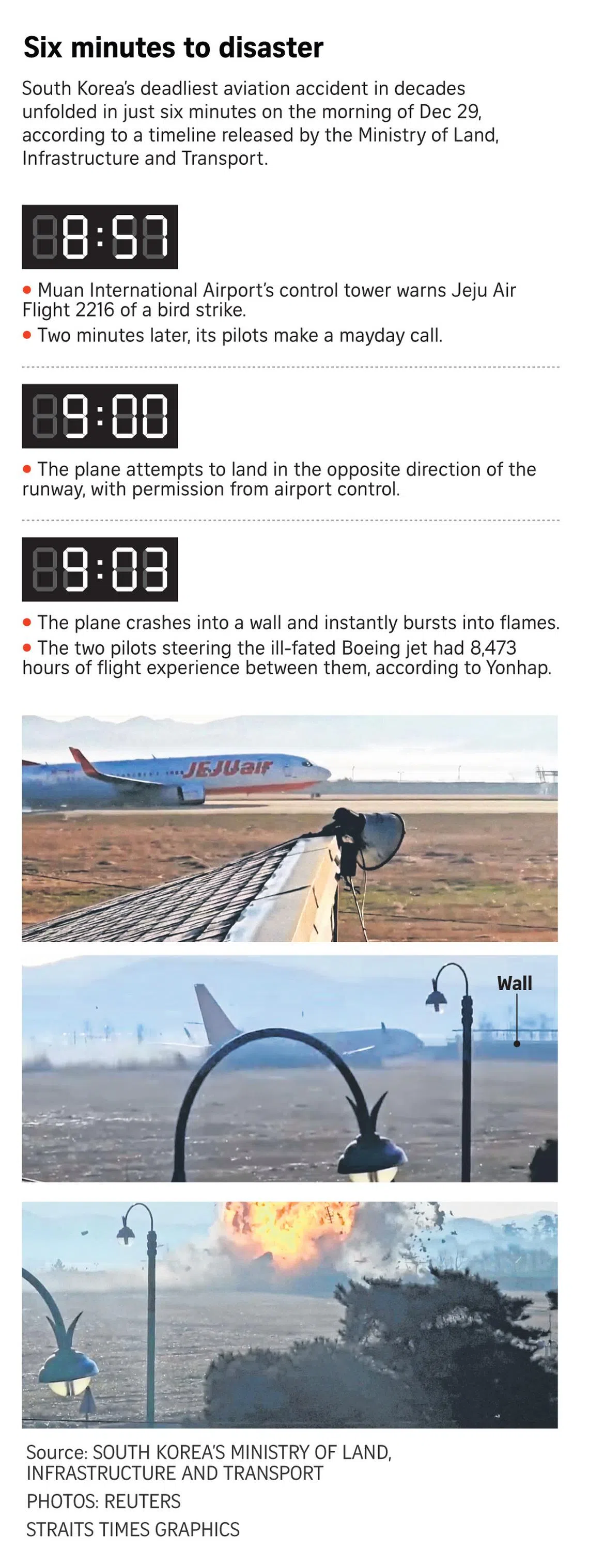South Korea jet crash puts fast-growing Jeju Air’s safety under scrutiny
Sign up now: Get insights on Asia's fast-moving developments

The wreckage of the Jeju Air aircraft lying near a concrete structure it crashed into at Muan International Airport in South Korea, on Dec 30, 2024.
PHOTO: REUTERS
Follow topic:
SEOUL/SEATTLE – Before it suffered the deadliest crash in South Korea’s history
The high utilisation rate of Jeju Air’s planes – the number of hours they fly in a day – is not problematic in itself, experts say, but means scheduling enough time for required maintenance is crucial.
The authorities have suggested a bird strike contributed to the accident, raided the airline’s Seoul office
“You’re literally looking at everything,” said aviation safety and crash investigation expert Anthony Brickhouse. “You’re going to start off with their accident history and safety history. What kind of events have they had in the past, what happened, what was done to correct the issues?”
Jeju Air told Reuters that it did not neglect maintenance procedures and that it would step up safety efforts. The Dec 29 crash, which killed 179 people, was its first fatal accident since its 2005 founding and the first for any Korean airline in more than a decade.
The company’s chief executive Kim E-bae – who has been barred from travelling overseas during the investigation – told a news conference last week that Jeju Air’s maintenance is in line with regulatory standards. He added that there were no maintenance issues with the doomed jet during pre-flight inspection.
He acknowledged that the airline’s safety measures had not been sufficient in the past, but said improvements had been made.
The authorities have not said poor maintenance contributed to the crash and the exact circumstances behind the disaster remain unclear. Apart from the reported bird strike, the authorities are looking into why the pilot may have rushed a second landing attempt after declaring an emergency, and why the landing gear was not deployed.
Investigators have recovered the cockpit and flight data recorders
The country’s transport regulator is inspecting all 101 Boeing 737-800s in South Korea – more than a third of which are operated by Jeju Air – focusing on how often and how well they were maintained, among other considerations.
Although Jeju Air recorded no violations in the last two years, it was hit with more fines and suspensions for aviation law breaches than any of its domestic rivals in 2020-2022, just during and after the Covid-19 pandemic.
According to Transport Ministry data on major airlines from 2020 to August 2024, Jeju Air was hit by about 2.3 billion won (S$2.16 million) in fines and the affected aircraft were kept out of operation for 41 days, according to Reuters calculations based on the data.
The next-most penalised airline, T’way Air, had 2.1 billion won in fines and four days of suspended operations during that period.
Jeju Air flies its planes more than any other major airline in the country, data show, and also outpaces most global peers such as Ireland’s Ryanair and Malaysia’s AirAsia.
Jeju Air Flight 2216 was flying from Bangkok to Muan in south-western South Korea when it belly-landed, overshot the runway and burst into flames after hitting an embankment. The aircraft flew every day in 2024, according to flight data reviewed by Reuters.

Utilisation rates
High utilisation rates are prized in the industry as an indicator of economic efficiency, especially at low-cost carriers, experts say.
Jeju Air, which ranks behind only Korean Air and Asiana Airlines in terms of passenger volumes in the country, saw record numbers from January to December 2024, according to Transport Ministry data.
Its monthly utilisation hours for passenger jets nearly doubled to 412 in 2023 from 2022, higher than Korean Air at 332 hours and Asiana at 304 hours, according to stock exchange filings.
T’way averaged 366 hours per month in passenger and cargo jets combined, Jin Air averaged 349 hours, and Air Busan 319 hours, according to their filings.
In 2024, Jeju Air flew its planes more each day – 11.6 hours – than almost any other airline offering cheap tickets and using only narrow-body aircraft, according to data from aviation analytics company Cirium. It calculates utilisation rates differently from the earnings filings. Only Saudi Arabia’s Air Arabia flew its planes more – 12.5 hours a day. Vietnam’s VietJet operated its aircraft 10 hours a day. Ryanair’s average use was 9.3 hours, while AirAsia was nine hours. China’s Spring Airlines flew eight hours a day.
“The utilisation itself is not a problem,” said professor of aircraft maintenance Sim Jai-dong from Sehan University in South Korea. “But there could be higher fatigue for pilots, crew members and mechanics given the higher utilisation rates.” REUTERS

